欧阳中石,泰安之肥城人也,生于庚辰之岁,终于庚子之冬。一生操卷,通国学,精京剧,尤以书法著称。其书,合字文书三才,字如冰清玉洁之晶莹,文若连珠置锦之雅致,书若神光环抱之璀璨。
Ouyang Zhongshi, hailing from Feicheng in Tai'an, was born in the year of Gengchen and passed away in the winter of Gengzi. Throughout his life, he was immersed in scholarly pursuits, mastered Chineseical studies, and excelled in Peking opera, but he was most renowned for his calligraphy. His writing combined the three virtues of character, literature, and calligraphy: his characters as clear and lustrous as crystal, his literary style as elegant as a string of pearls laid upon brocade, and his calligraphy as radiant as divine light encircling.
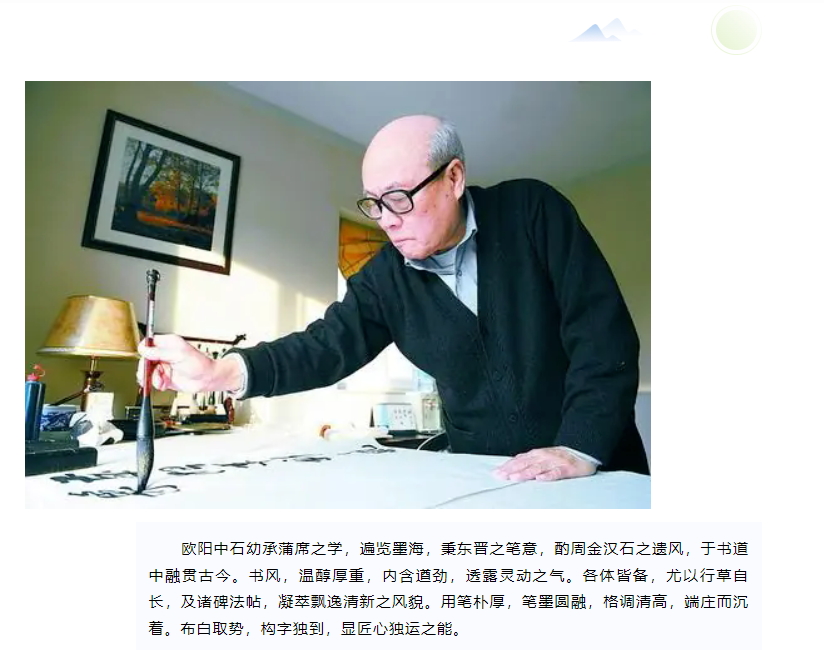
From a young age, Ouyang Zhongshi was schooled in theical disciplines and explored the vast ocean of ink. He inherited the brushwork ethos of the Eastern Jin dynasty and assimilated the remnants of styles from the Zhou, Jin, Han, and Stone dynasties, integrating ancient and modern elements into his calligraphy. His style was warm and rich, with a forceful undercurrent conveying a lively spirit. He was proficient in all forms, especially excelling in semi-cursive script, and his work epitomized an elegant and fresh demeanor. His brushwork was simple yet profound, the ink blended smoothly, and his overall style was noble and composed. His layout was ingeniously set, and his character formation was unique, showcasing his exceptional craftsmanship.
欧阳中石之楷书温润而厚重,如古木盘根错节,不落尘俗;行书如铁画银钩,流转帖学之细腻,碑学之雄浑。字体之开合,自若风姿。书法之美,深需文化之蕴液,包罗文史哲理,自然科学亦涵于内,熔铸于笔端,化为独步天下之艺术。其书流畅,犹天行健,其作品如沐东风之朝阳,如立霜雪之青松,心态健康而情调明朗,展人间之美态,令观者心旷神怡,意气风发。书法之和谐,内外交融。简繁之间,亦不分斥,内修国学与逻辑音韵,融戏剧与教学于一炉;外求古今之通达,观书法艺术非只一二之功,而文化内涵为重。习书之时,必重书法文化,认字、写字、用字三者合一,紧扣传承与弘文之责。
自古汉字之变革,皆向简易直观之势发展。欧阳之书法,清雅而整洁,笔法清新不滞,无一丝拖泥带水之态。不事雕琢,自然之美自笔锋流露,纯熟之技以胸中气象传之纸上,点画生姿,章法得体,书与文映成趣,观之令人心动。书法之易识,考社会大众之需,使汉字之美,无论学识渊博与否,皆可由不同视角触及心灵。书写恪守法度,不仅文字须讲究,诗词曲联、美学哲学、品鉴理论、行款格式、称呼礼仪及笔墨砚台,每一环节皆不可忽。
Ouyang Zhongshi's regular script is warm and thick, reminiscent of ancient trees with intertwined roots, standing aloof from vulgarity; his running script is like iron hooks and silver strokes, fluidly combining the delicacy of model calligraphy with the robustness of stele studies. The opening and closing of his characters are as graceful as nature itself. The beauty of his calligraphy deeply requires the essence of culture, encompassing philosophy, history, and even natural sciences, all fused at the tip of his brush and transformed into an art form unparalleled in the world. His writing flows as naturally as the heavens, and his works are like the morning sun bathed in an east wind or pine trees standing tall in frosty snow, conveying a healthy mindset and clear tone, displaying the beauty of humanity that delights and energizes the viewer. The harmony in his calligraphy merges internal and external elements. There is no strict separation between simplified and traditional characters; internally, he integratesical studies with the logic of phonology, blending drama and teaching into one; externally, he seeks an understanding that bridges ancient and modern times, emphasizing that the art of calligraphy is not merely about skill but significantly about cultural depth. In practicing calligraphy, one must prioritize the culture of calligraphy, combining the recognition, writing, and application of characters tightly with the responsibilities of cultural transmission and promotion.
The evolution of Chinese characters has always moved towards simplicity and intuitiveness. Ouyang's calligraphy is elegant and neat, his brushwork is fresh and unobstructed, devoid of any dragging or dilatory motions. He does not contrive artifice; the natural beauty flows from his brush tip, his skilled technique transferring the breath of his spirit onto the paper, creating vibrant strokes and well-formed structures, making the text and its presentation intriguing and heart-stirring to the observer. The legibility of his calligraphy considers the needs of the general public, making the beauty of Chinese characters accessible from various perspectives regardless of the depth of one's scholarly knowledge. Writing adheres strictly to established norms, not only in the characters themselves but also in poetry, couplets, aesthetics, philosophical evaluation theories, presentation formats, honorifics, and even the tools of the trade like brushes and ink stones, where attention to every detail cannot be overlooked.

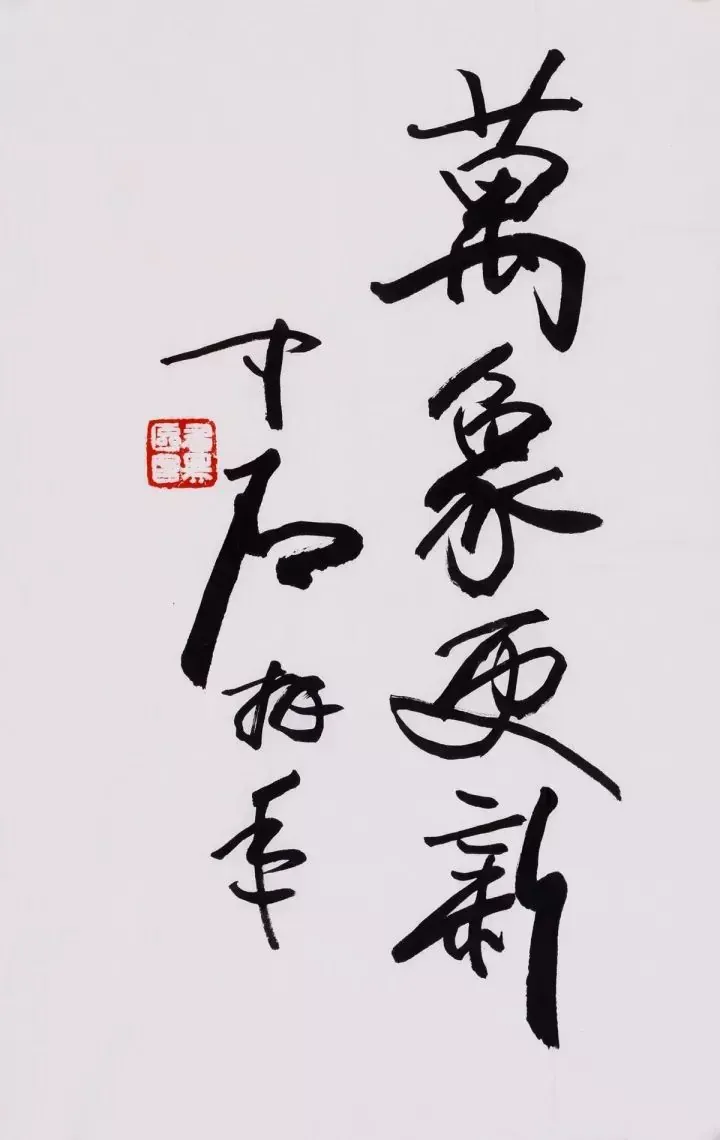
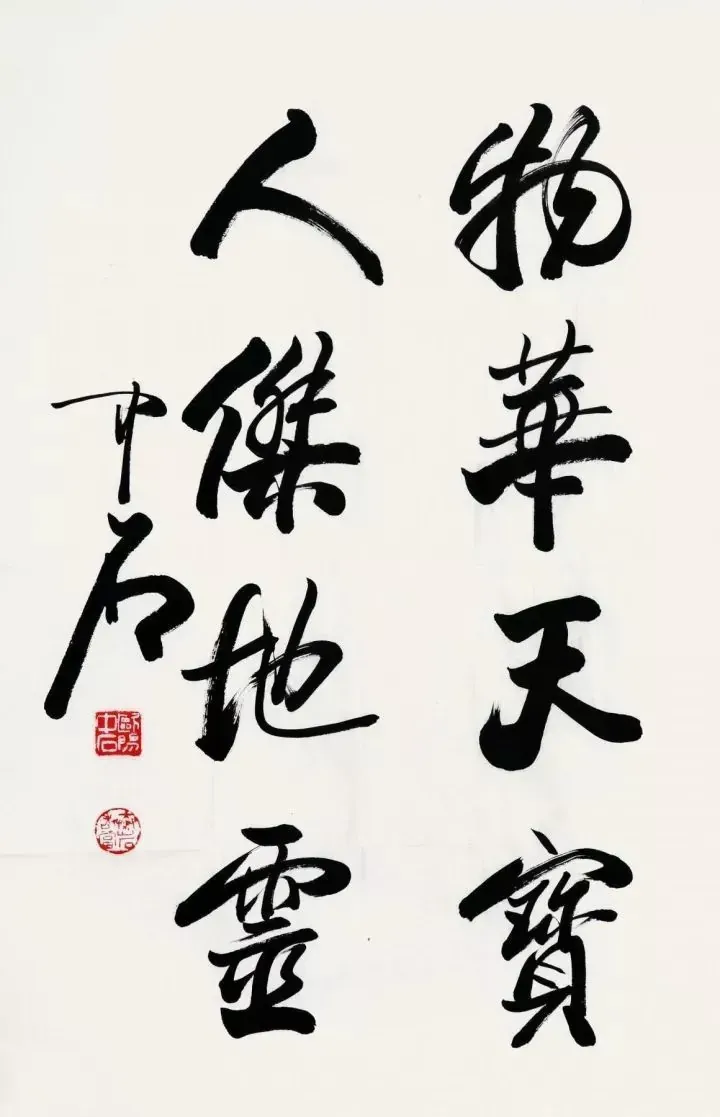
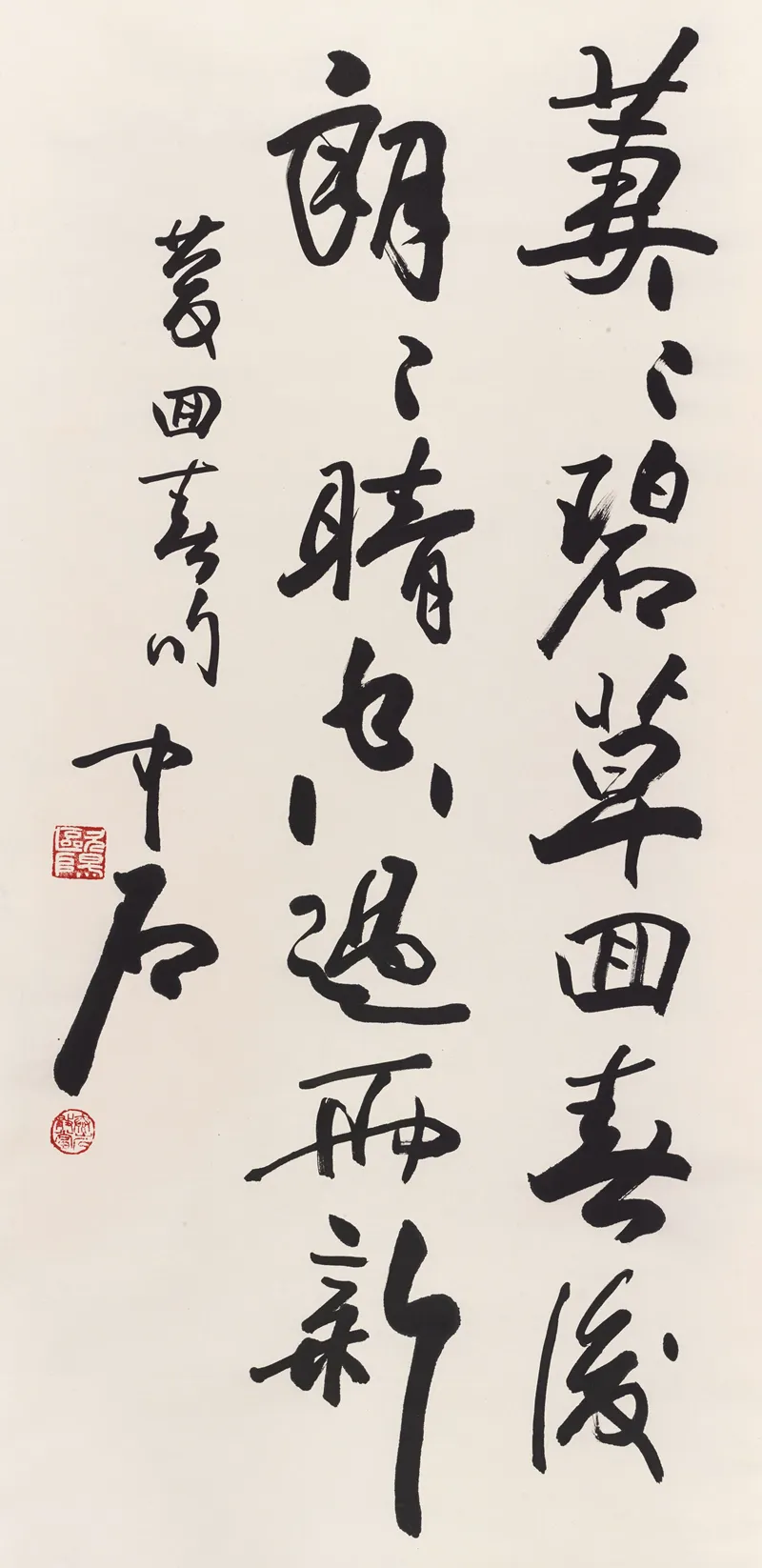
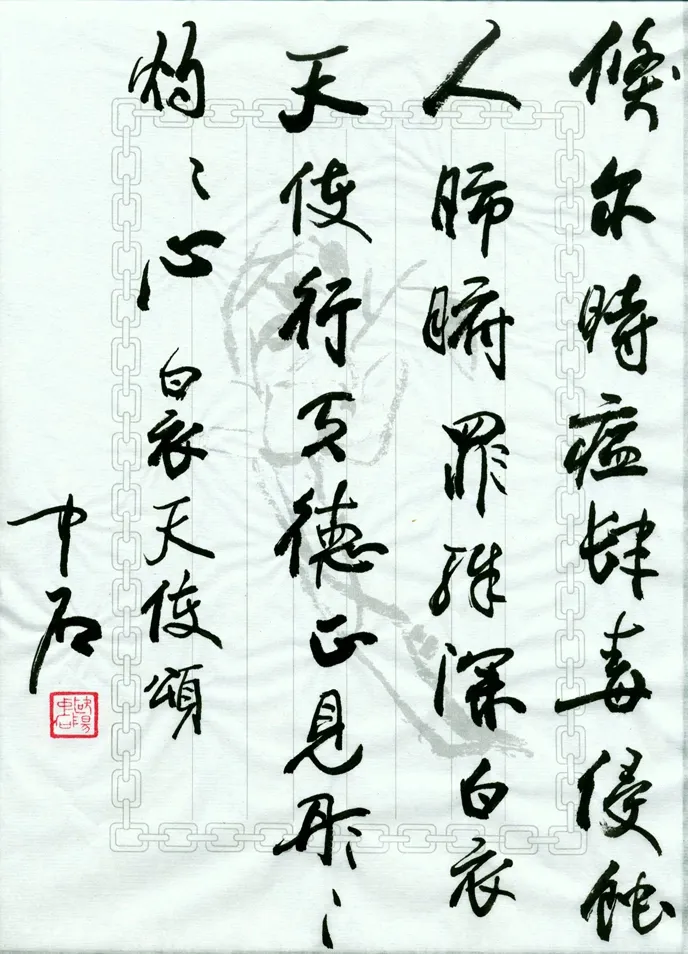
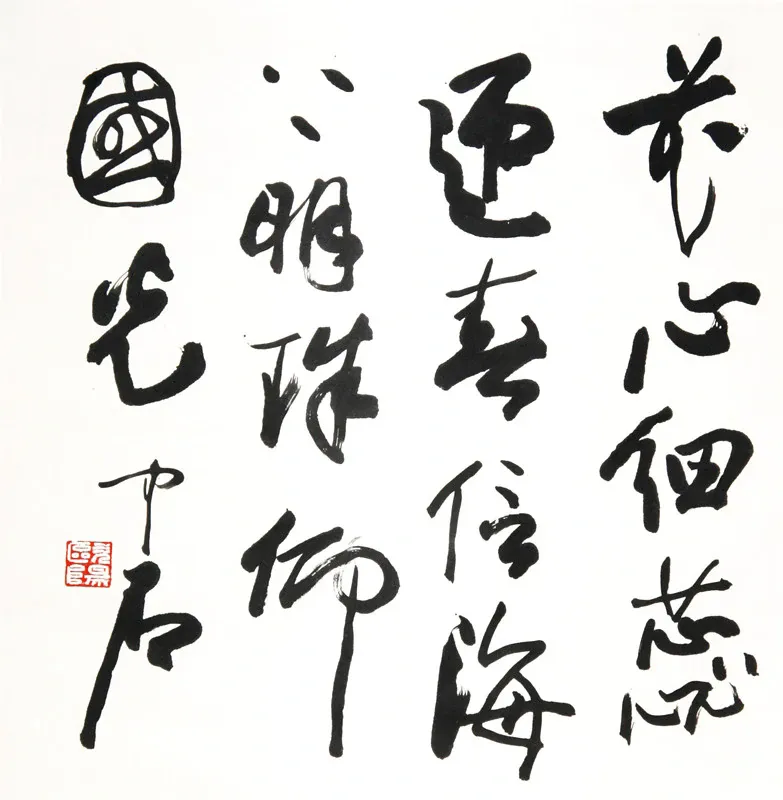
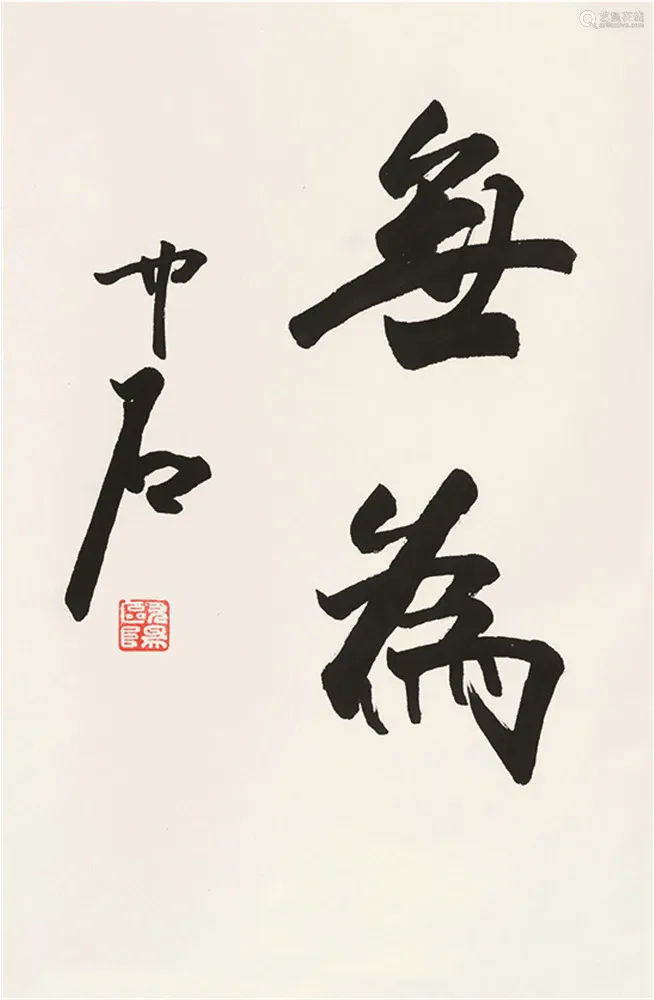
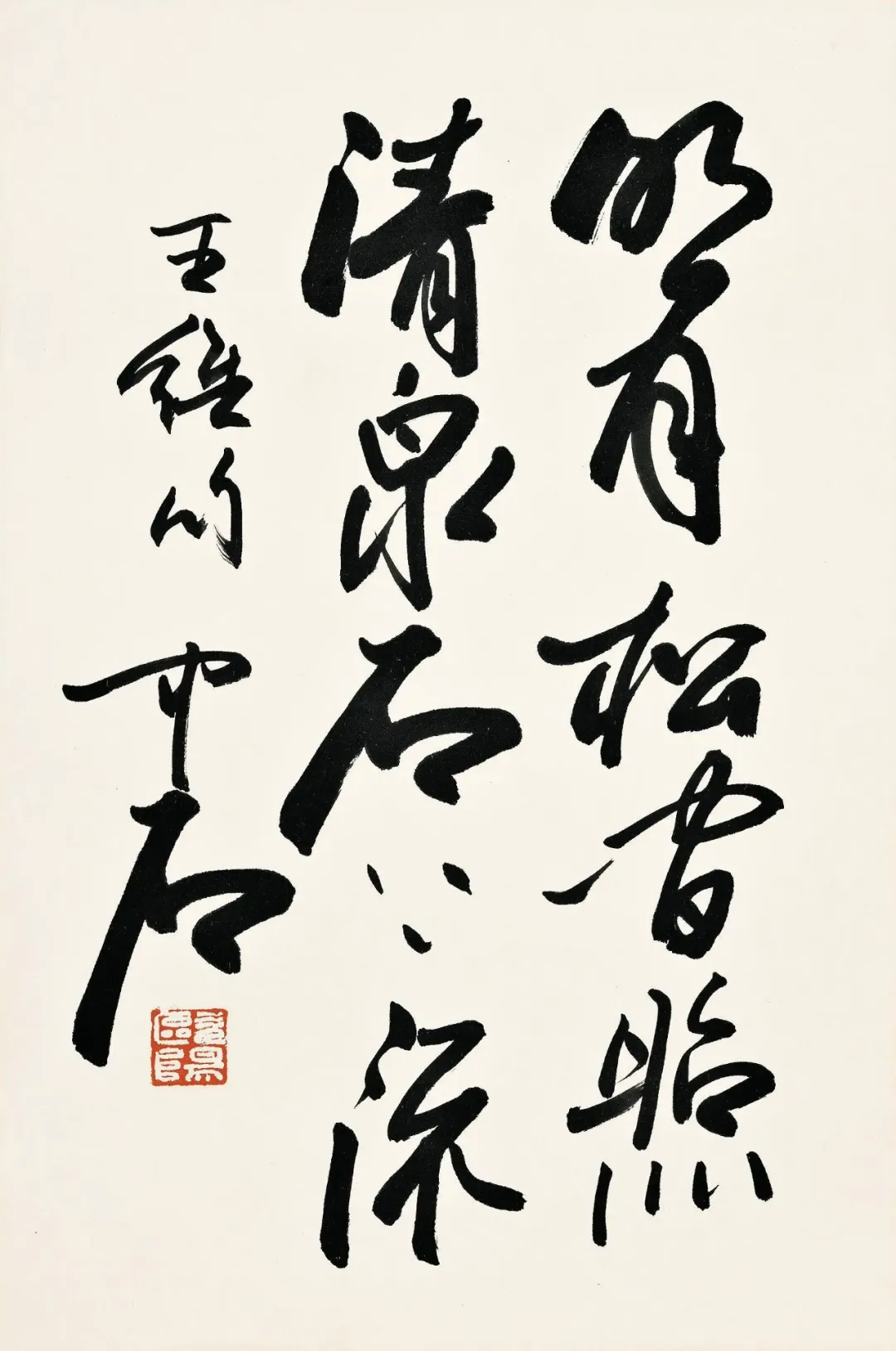

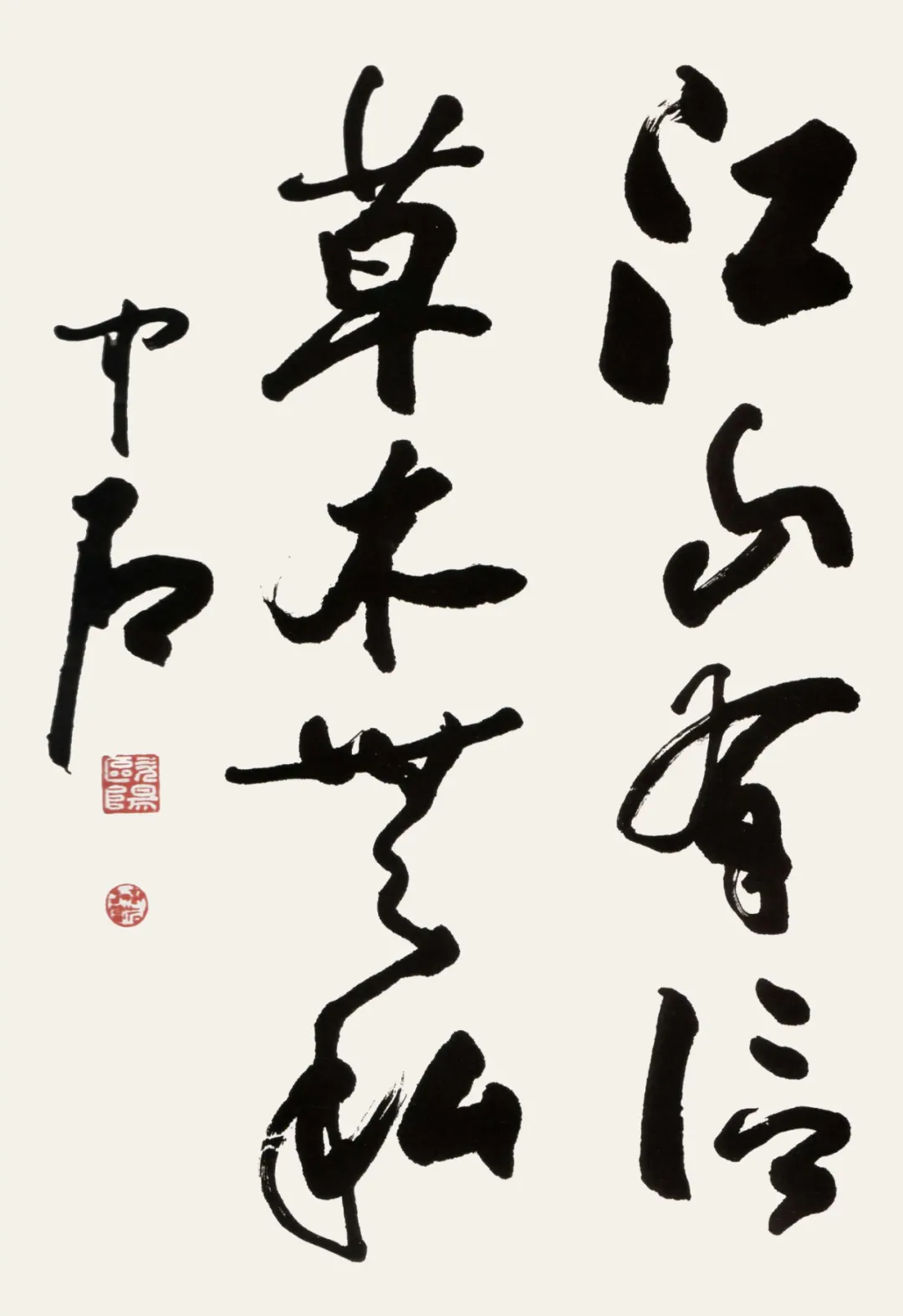
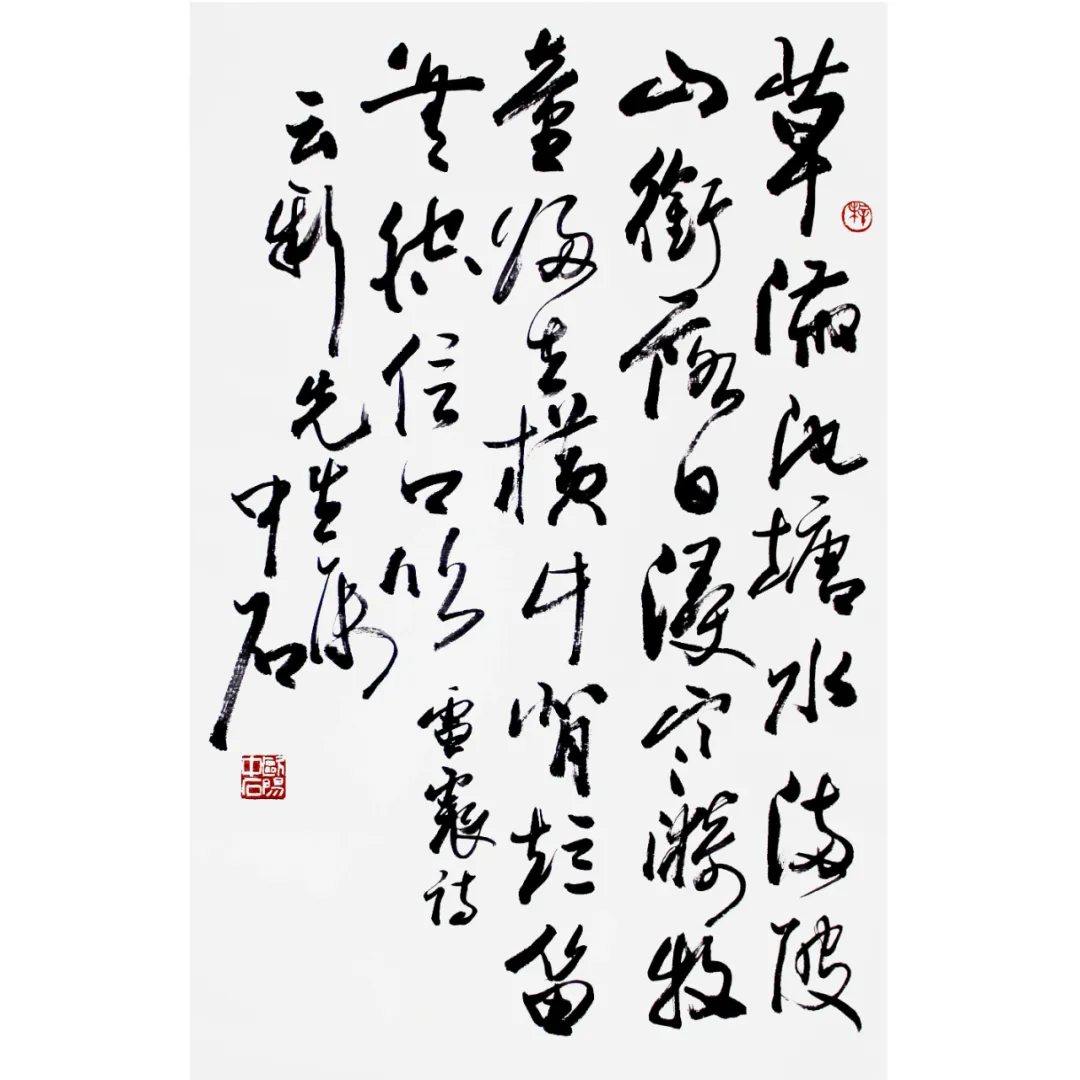
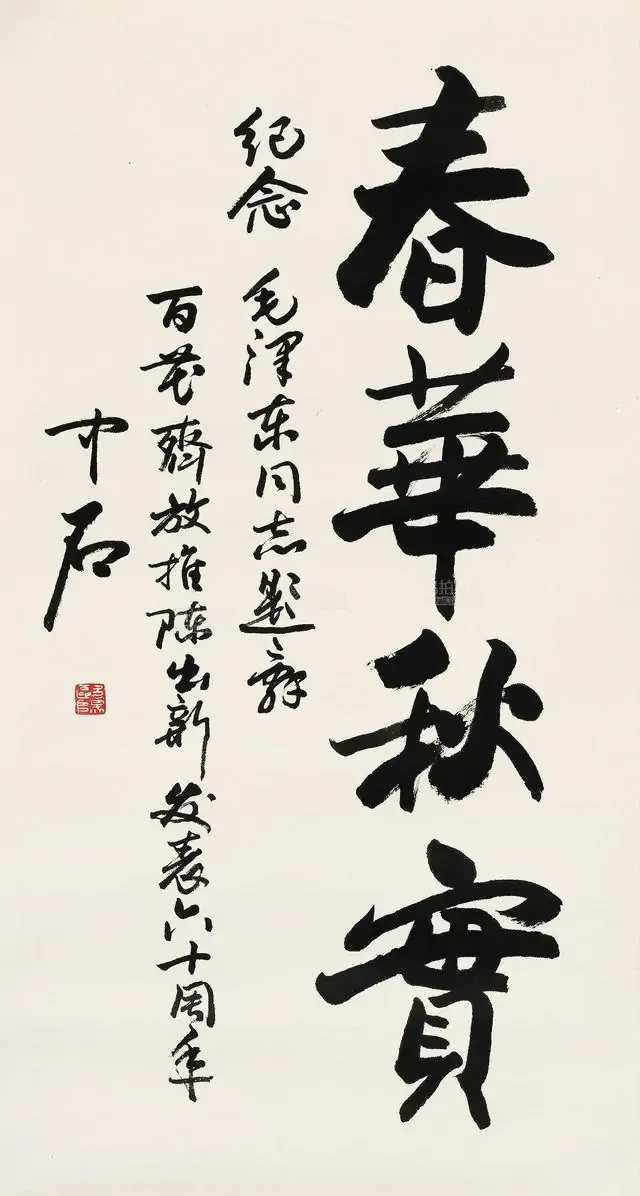
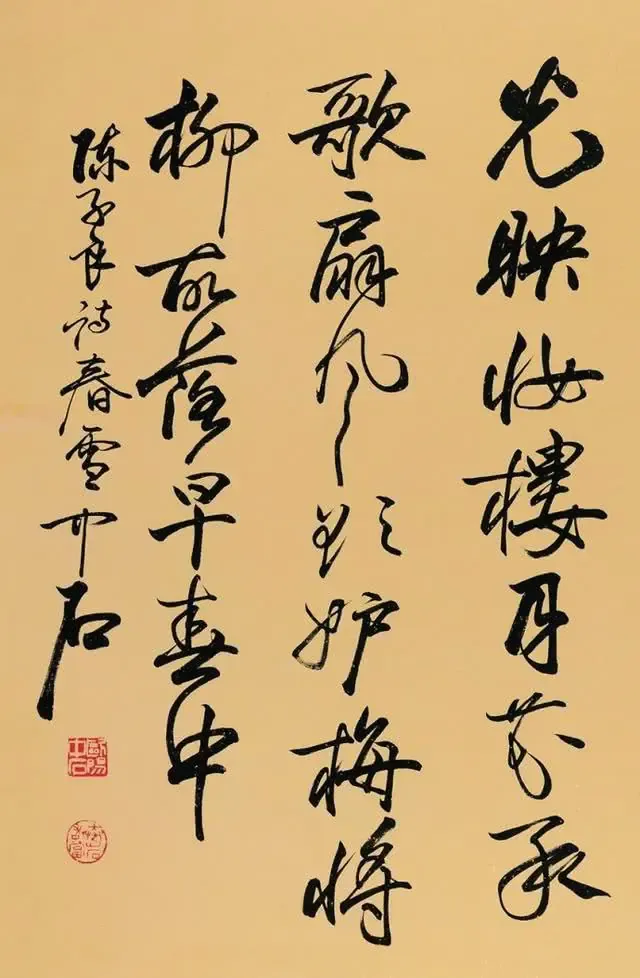
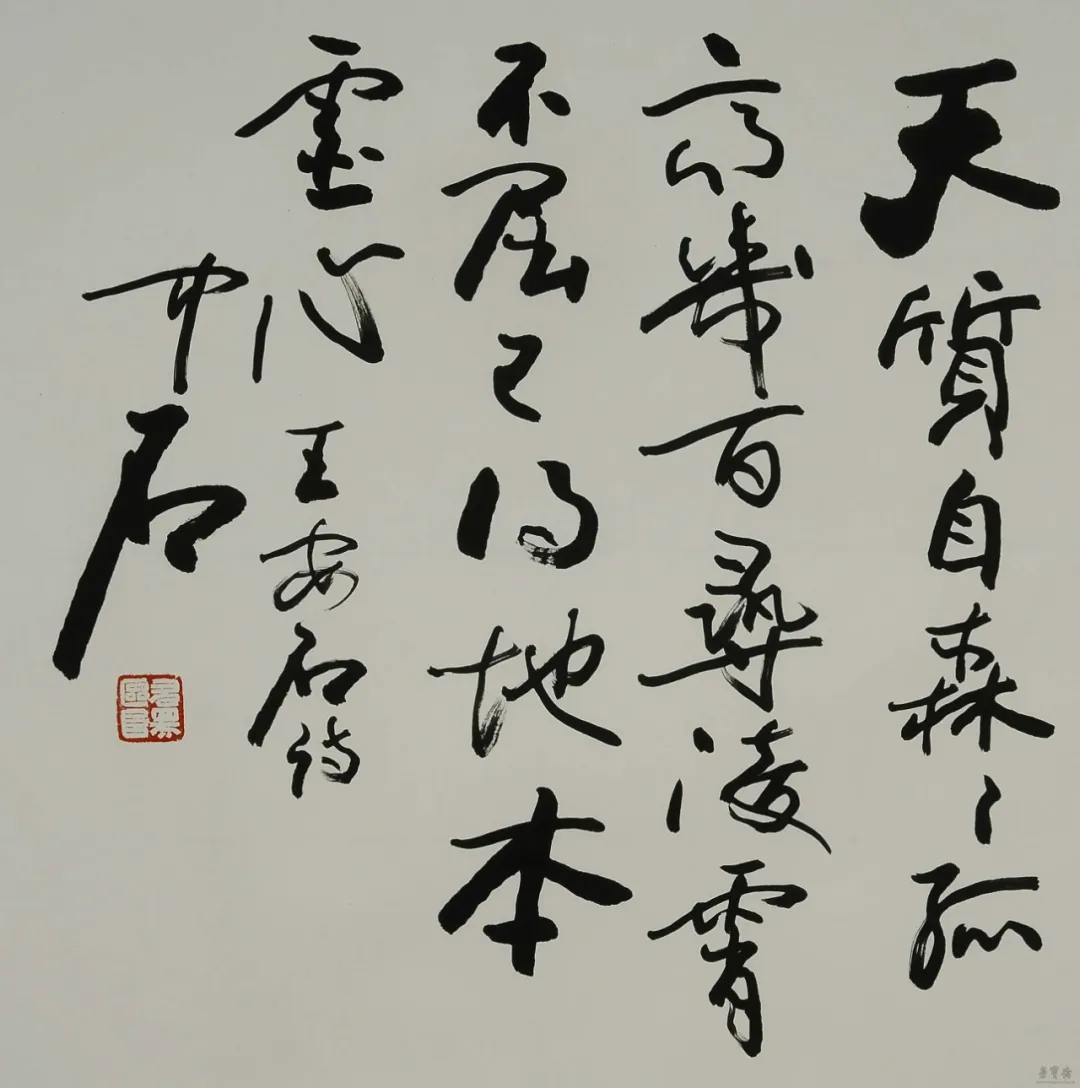
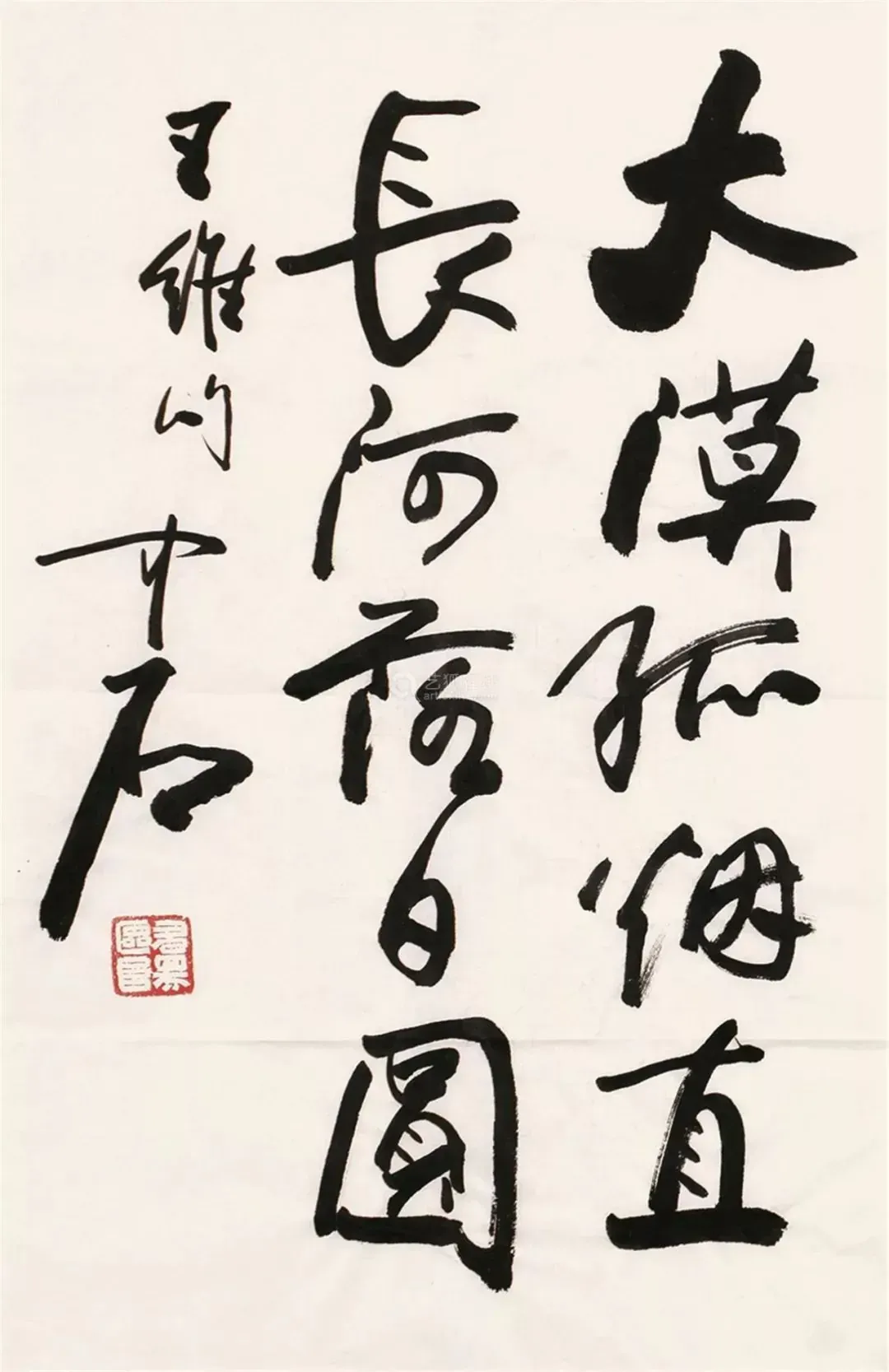

中石谓:“作字行文,文以载道。字文书三而一体,研墨非独修炼字形,须臾文化大观中得其门径。”夫书法,非徒笔墨之事,乃承载深厚文化意蕴,具高远社会价值之艺术也。书之为用,以文化为魂,以道德为用,书面之下,文化氤氲,不可视之为泛泛之笔墨。
书艺宜随世转移,应世而变,承前启后,以文化贯彻笔端。欧阳氏之笔法,笔力老辣,疏密得宜,行笔之间,舒卷自如。每作一字,尽得笔墨之韵,缓笔使情绪与意境得以沉淀,显书法之酣畅淋漓。书中自有浓淡干湿,干湿得宜,枯润并茂,抑扬顿挫,细腻入微。
欧阳氏主张,书法必须脉络传统文化,视之为文化载体,以书达意,以文显道。视书为窗,洞察文化之广博,使书法教研成为认知之完整系统。书法,应以哲学为骨,以文化为筋,心如流水,匠心独运,自在挥洒。
欧阳氏之心胸,既宽广又深沉,书法中不自设限,不随波逐流,欢迎各家艺术之探求。虽途径不同,终归于书法艺术之真谛。是为欧阳中石之书道,亦是其推广书艺之初衷,欲以此达成书法与文化之和谐共融。
是以欧阳中石之书法,非徒承载技艺,更是文化与精神之传承,其对时代之艺术诠释,如泉涌而出,清新而深远。
Zhongshi stated, "In crafting characters and composing text, the text carries the Way. Character, text, and book are unified. Studying ink is not solely about refining the form of characters; one must discover the pathway within the grand view of culture." Indeed, calligraphy is not merely a matter of ink and brush but an art that carries deep cultural significance and possesses profound societal value. In its use, calligraphy embodies culture as its soul and morality as its purpose; beneath the surface of the script, culture pervades, and it cannot be seen merely as superficial ink marks.
The art of calligraphy should evolve with the times, responding and changing accordingly, connecting the past and future through culture infused in every stroke. Ouyang's brush technique is robust and precise, appropriately sparse or dense, with each movement fluid and natural. Each character he crafts captures the essence of the ink, and his slow pacing allows emotions and artistic conception to settle, revealing the unrestrained joy of calligraphy. In his work, there is an appropriate mix of density and moisture, dryness and richness, and subtleties that accentuate every nuance.
Ouyang advocates that calligraphy must follow the veins of traditional culture, seeing it as a carrier of culture, using the book to convey meaning, and text to reveal the Way. Viewing calligraphy as a window to explore the vastness of culture, he believes calligraphy teaching and research should form a complete system of understanding. Calligraphy should be underpinned by philosophy, strengthened by culture, with a heart like flowing water, originality in craftsmanship, freely expressed.
Ouyang's broad and profound mindset does not confine itself within calligraphy nor blindly follows trends but welcomes the exploration of artistic diversity. Although paths may differ, all lead to the true essence of calligraphic art. This is the path of Ouyang Zhongshi's calligraphy and also his initial intention in promoting the art, aiming to achieve a harmonious integration of calligraphy and culture.
Thus, the calligraphy of Ouyang Zhongshi not only carries on a skill but also the transmission of culture and spirit, interpreting the art of the era like a spring gushing forth, fresh and profound.
责任编辑:苗君